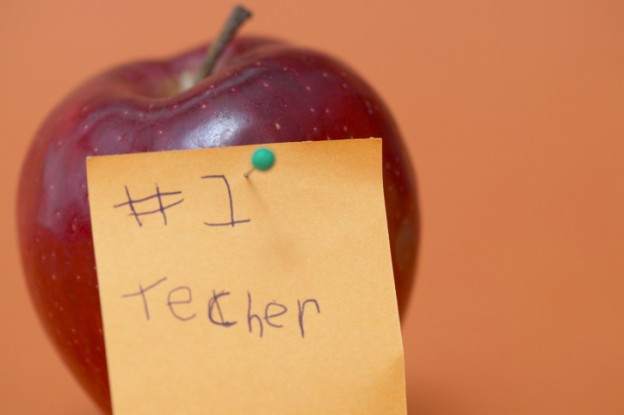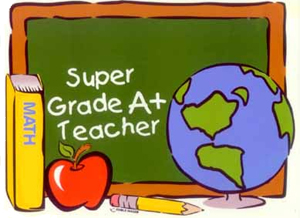
Special Education
I recently heard of a study that researched why there is such a high turnover rate for special education, with the researchers believing their findings would indicate the paperwork aspect of special education. However, they were surprised to learn it was a more emotional component. Special education teachers, in most instances, do not get as much appreciation as their general education colleagues.
In a time where ALL teachers are working to validate their jobs - special educators are on overdrive. So - if you know a special education teacher, be sure to let them know you love them!
Knowing I am writing on a blog whose readers are mostly parents, I was hesitant to include this but knowing it is one of the hardest parts of my job, felt I had to.
I've written before on the importance of bridging the gap between home and school. I know the vital importance of establishing a positive relationship with parents - I quickly feel defeated when that doesn’t immediately happen. I am often so discouraged when parents do not return my phone calls, respond to emails, or even read the notes I send home.
I hate sitting in an IEP Meeting and listening to a parent tell me as long as their 4th grade daughter is pretty and skinny, she’ll be okay in this world (Yes, true story!). My heart breaks when a child who was once so motivated to do well no longer cares because their parents do not value education and have expressed as much to their child.
“You have the easiest job in the world!”
“I wish I had summers off!”
“What do you have to complain about?”
Bashing teachers and their jobs has become the new form of media entertainment. It has rained especially hard on special education teachers. Teaching is hard, teaching is important, and teaching is deserving of an actual salary with benefits. Special education is necessary, special education is an actual form of teaching, and special education is special. Please show your support for ALL teachers!
Sometimes, I feel I have no time to teach because I am dealing with paperwork and meetings. For any parent who has seen an IEP, they are easily 10-20 pages. I once received an IEP from Texas that was 56 pages long! That takes time and a tremendous amount of consideration.
Additionally we have our lesson planning, report cards, progress reports, signing of REEDs and addendum's, medicaid billing forms, and so much more. As a special education teacher - you have to just embrace the paperwork.
I have to coordinate my schedule with 15 different teachers and their schedules, and that's not including coordinating with the physical education teacher, art teacher, and the music teacher.
I must account for recess and lunch when creating my resource schedule and I have to be considerate of our speech pathologists, occupational therapists, and physical therapists schedules.
It can take me 2 full weeks at the beginning of the school year to get a schedule in place for myself and my students. And then that schedule is frequently interrupted by students being added to my caseload or dismissed from my caseload.
After the schedule is finally set comes classroom parties, assemblies, a switch in computer lab times. Any minor change in a general education teacher’s schedule is enough to change my entire day and often my entire week.
Working with two other adults who are there to help me can be extremely beneficial. I am so thankful for my aides and couldn’t do my job without them.
The challenge is that it also adds a considerable amount of work for me as well. On top of my schedule and my student’s schedule, I also create a daily schedule for my “paras”. Usually this setup also requires that I first teach my aides so my students can be taught.
It gets even more challenging if the aides have a different opinion than I do or challenge a certain aspect of the job. As someone who is much younger than both of my aides, it is hard to feel “in charge.” In the end, I must value their advice and opinions so we can all work as a team but also realize that the pressure is on me to make sure things get done correctly because I am the one responsible, not my paraprofessionals.
As a special education resource teacher, I have to know the general education curriculum so I can support my students and their needs. I teach students in five different grade levels and therefore, am responsible for knowing 5 different curriculums.
I have to collaborate with the teachers of all my students to make sure I am supporting what is being taught in the classroom and supplementing my own resources. Finding the time to talk to each teacher is extremely important and extremely challenging. Being organized enough to do so is also a very difficult task.
Data collection is huge in special education. I need to be able to validate everything I do and make sure it coincides with everything in the student’s IEP.
If I say a child is still struggling in a certain area, I need proof to back up my claim. I need the general education teachers on board with me as well because I have to ask them to collect data for the times I am not in the classroom with the student. I have to keep track of and monitor all this data, understand its implications for that child’s educations, and adjust instruction accordingly.
Student growth is now a part of all teachers’ evaluations in order to hold teachers more accountable. It is a double-edged sword. Without question, it is critical that teachers are effective in the classroom and students are learning from the instruction provided. On the other side, we know not all assessments are valid indicators of student growth.
For students with special needs, I have learned to celebrate the smallest of accomplishments. Their growth is not going to be as fast or as noticeable as their general education peers. However, it is progress! Sometimes, it is very hard for people to recognize the successes of a student when they are constantly comparing them to the best and brightest of the class. This is only doing a disservice to the student, not the special education teacher.
In all classes, you will see students who are at different ability levels, learn in different ways, and understand concepts at different times. Differentiated instruction and individualized teaching practices are challenging for all teachers. It gets even more difficult in a special education, multi-aged classroom.


 1. Lack of appreciation
1. Lack of appreciation 2. Parent support
2. Parent support 3. Public support
3. Public support 4. Paperwork
4. Paperwork 5. Scheduling
5. Scheduling 6. Training and supervising paraprofessionals
6. Training and supervising paraprofessionals 7. Collaborating with general education teachers
7. Collaborating with general education teachers 8. Data collection
8. Data collection 9. Evidence of student growth
9. Evidence of student growth 10. Variability of student’s needs
10. Variability of student’s needs
